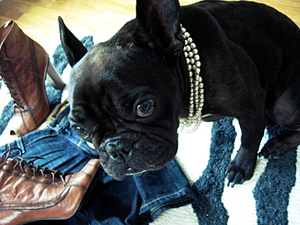Another of the ancient breeds, the greyhound has long been associated with nobility and depicted hunting with them in artwork, as well as described in official records. The greyhound, with its long, lean body and legs, has the ability to accelerate quickly and maintain some of the fastest sprinting speeds of any land mammal on the planet. While their original use was for hunting, in more modern times they’ve been used for lure chasing and other forms of racing. With the rise of adoption centers, many retired racing greyhounds are now finding popularity as pets in the home.
Records of greyhounds date to the Celtics in Europe, although some contend that they originated in ancient Egypt, with modern lines tracing first to private 18th Century studbooks and then public kennel club records in the 19th Century. They arrived in America with Spanish explorers in the 1500s.
With incredible sprinting speeds, strength and acceleration, greyhounds can chase down just about anything that runs. Throughout history they’ve been used to hunt a wide variety of game, from deer, foxes, rabbits and hares to antelope, gazelles and wolves. In America today, they’re still used for small-game hunting of rabbits, as well as coyote ...





